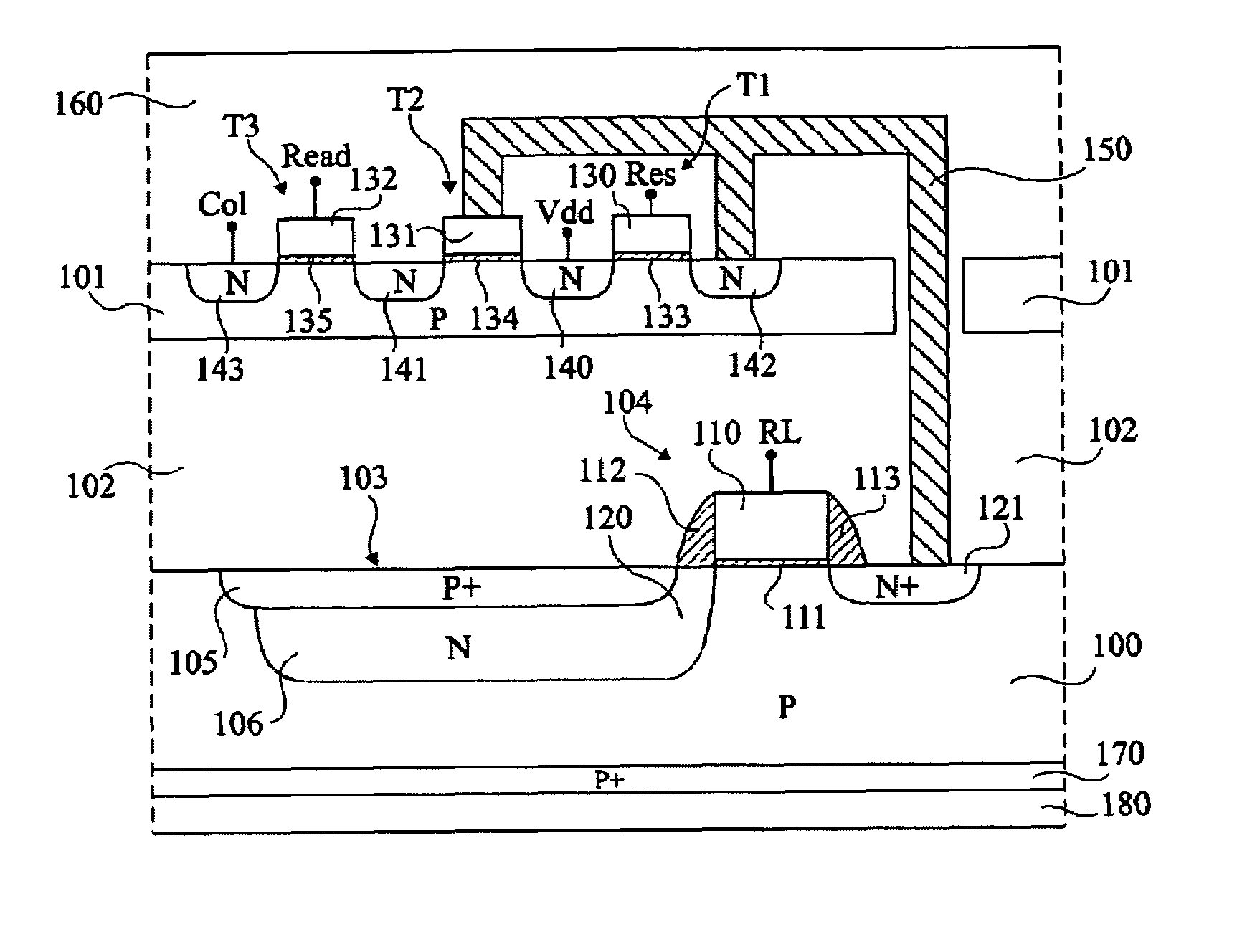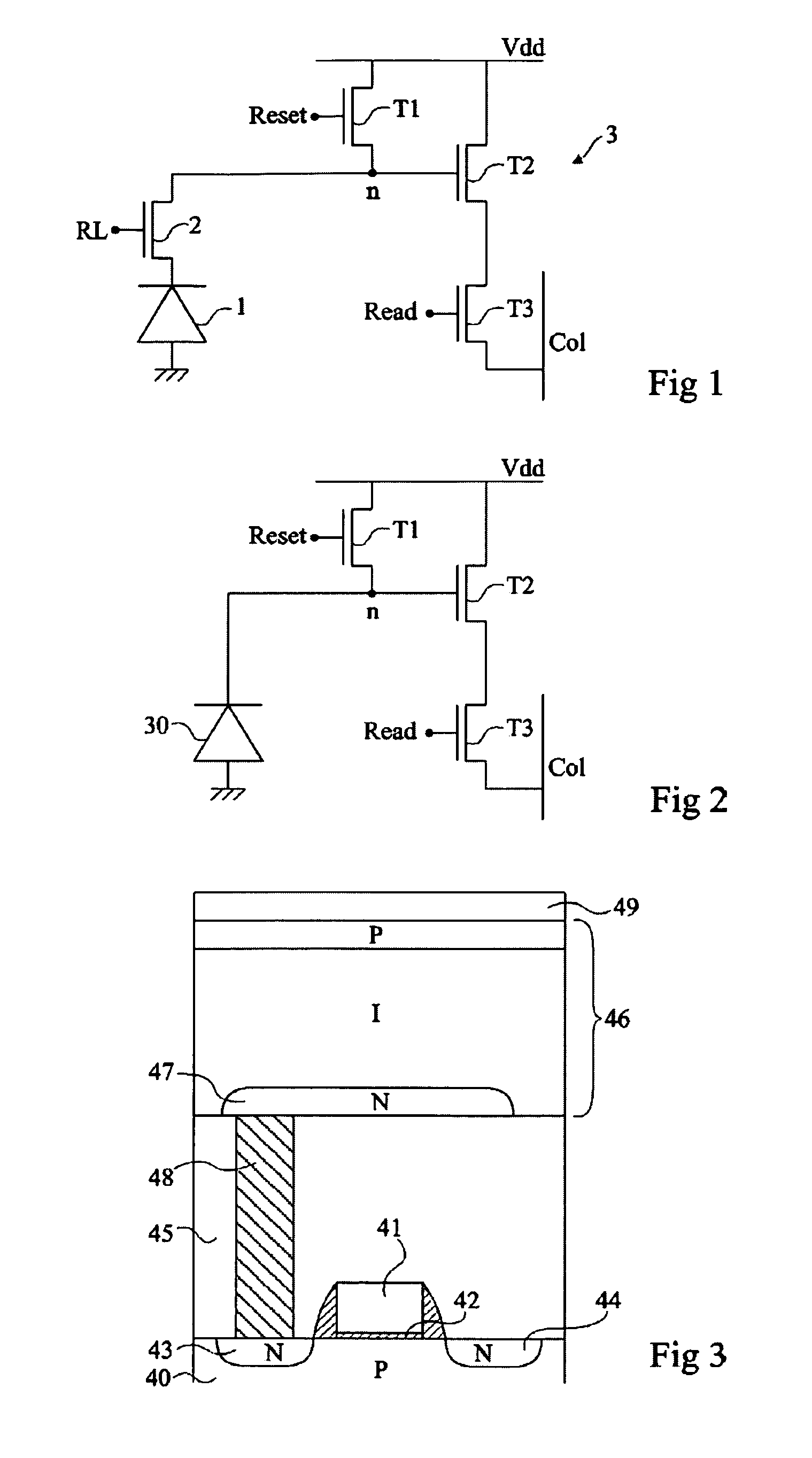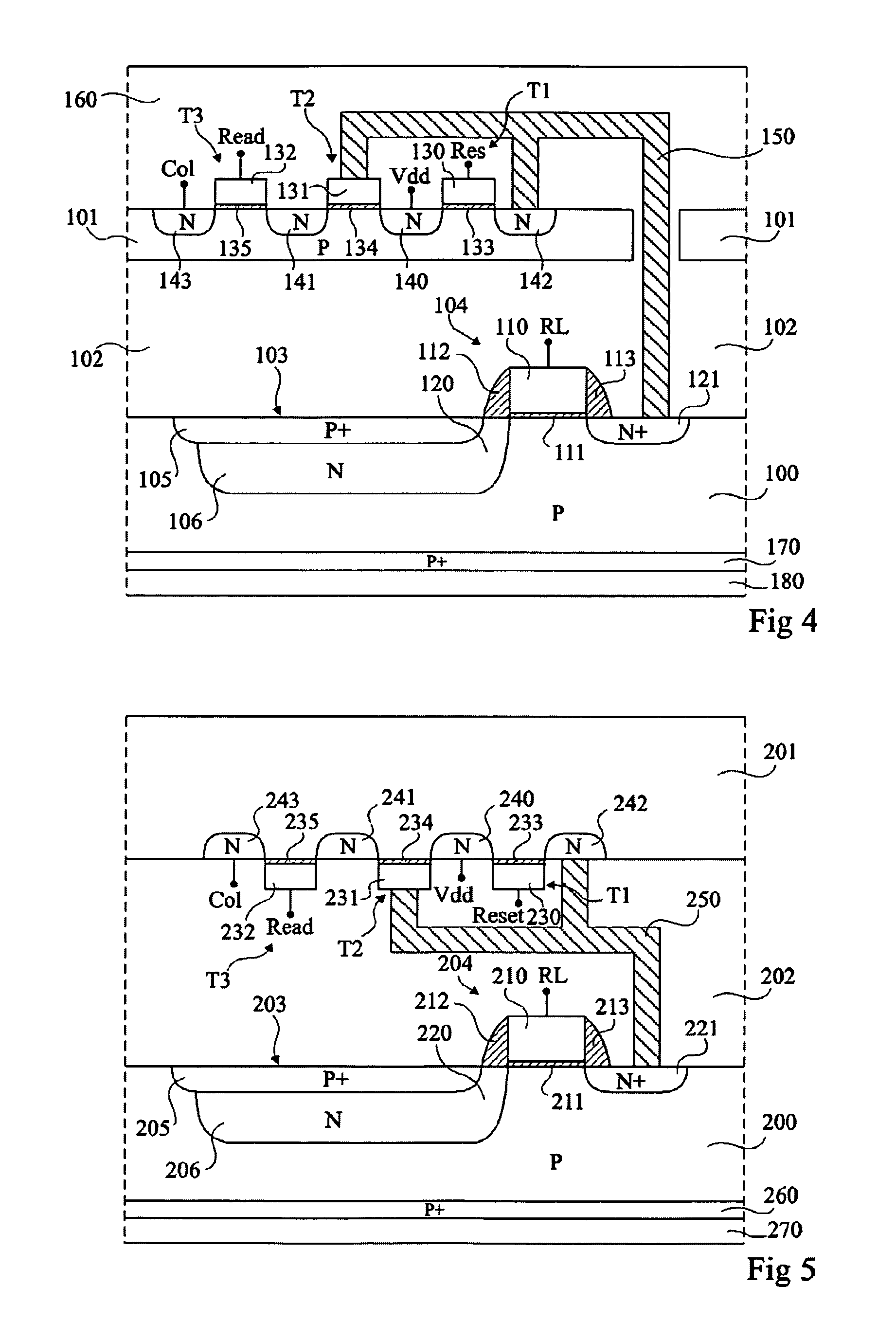Image sensor
a technology of image sensor and addressing circuit, which is applied in the field of image sensor, can solve the problems of image sensor requiring a slightly more complex addressing circuit, reducing the surface area of the pixels, and reducing the sensitivity of the image sensor, so as to achieve good sensitivity, good quality, and reliable with time.
- Summary
- Abstract
- Description
- Claims
- Application Information
AI Technical Summary
Benefits of technology
Problems solved by technology
Method used
Image
Examples
Embodiment Construction
[0035]For clarity, the same elements have been designated with the same reference numerals in the different drawings and, further, as usual in the representation of integrated circuits, FIGS. 1, 3, 4, and 5 are not drawn to scale.
[0036]An image sensor according to the present invention comprises pixels of 4-transistor type, such as described in FIG. 1. The photodiodes and the access transistors of the pixels are formed in a “lower” semiconductor substrate, and the transistors of the read circuit are formed in an “upper” semiconductor substrate. The two substrates are superposed and separated from each other by an insulating layer. The read transistors are thus placed above the photodiodes and the access transistors. Further, the photodiodes receive incident transistors arriving on the lower surface side of the lower substrate, opposite to the insulating layer and to the upper substrate.
[0037]Examples of embodiment of an image sensor according to the present invention are described i...
PUM
 Login to View More
Login to View More Abstract
Description
Claims
Application Information
 Login to View More
Login to View More - R&D
- Intellectual Property
- Life Sciences
- Materials
- Tech Scout
- Unparalleled Data Quality
- Higher Quality Content
- 60% Fewer Hallucinations
Browse by: Latest US Patents, China's latest patents, Technical Efficacy Thesaurus, Application Domain, Technology Topic, Popular Technical Reports.
© 2025 PatSnap. All rights reserved.Legal|Privacy policy|Modern Slavery Act Transparency Statement|Sitemap|About US| Contact US: help@patsnap.com



